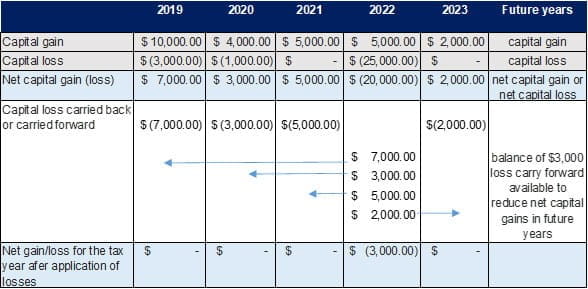Capital Loss Planning
Near the end of the year, investors typically review their portfolios for potential capital losses to apply against realized capital gains in order to reduce their income tax for the year.
In order for a Canadian taxpayer to apply a capital loss against capital gains realized in the 2022 tax year, the trade must settle on or before December 31, 2022.
US tax returns use the trade date as the inclusion date for the year-end cut-off, not the settlement date. US citizens should keep that in mind to avoid a mismatch of gains or losses between the Canadian and US tax return years.
For Canadian and U.S. markets, the last 2022 trade date is December 28, 2022 for settlement on December 30, 2022.
Consider these tax strategies for realizing capital losses:
- Sell the security and move to cash.
- Sell the security and replace it permanently with another suitable investment.
- Sell the security and temporarily replace it with a correlated ETF then repurchase the stock after 30 calendar days.
- Donate a loss security to a Canadian registered charity to realize the loss and receive a donation tax credit.
- Carry back net capital losses to offset net capital gains in the prior three years where the highest rate of income tax applied.
- Carry forward net capital losses where there is an expectation of high capital gains and high marginal tax rates in the future.
- Defer realizing the loss to a future year when there will be a large capital gain planned, such as the sale of a rental property.
Capital Loss Carry Backs and Carry Forwards
When capital losses exceed capital gains for the tax year, a net capital loss is the result. A taxpayer may carry back net capital losses for a particular tax year to reduce net capital gains in any of the prior three tax years.
The taxpayer may also carry forward the net capital loss indefinitely to reduce net capital gains realized in future tax years.
Illustrative example of loss carry backs and carry forwards:

Superficial Loss Rules
A taxpayer cannot simply sell and repurchase the same securities to realize a deductible capital loss. The tax rules will treat the transaction as a superficial loss to deny the loss claim if the taxpayer or their spouse acquires the same security within 30 days before or after the sale and they still own the security at the end of that period. This rule includes repurchases inside RRSP, RRIF, and TFSA accounts, as well as repurchases by a corporation controlled by the taxpayer or their spouse. The current holder of the repurchased security must add the denied loss to their adjusted cost basis (ACB). This rule also means that taxpayers should not contribute loss securities in-kind to their RRSP or TFSA because the loss is not claimable at time of contribution or eventual disposition inside the plan.

Taxpayers can use the superficial loss rules to transfer a capital loss to their spouse. For example, if X already has capital losses for the year or a loss carry forward balance, they can sell the asset on the market and co-ordinate with Y, their "non-loss/high capital gain" spouse to buy the security on the market within 30 days of X’s sale date. Y receives the higher cost basis for tax purposes because Y must add X’s denied loss to their own ACB. Y can then realize the loss when Y sells it on the market at least 30 days after X sold the stock.
Foreign Currency Translations
Remember to take into account foreign exchange rates when estimating capital gains for the year. A large gain within a US dollar account could end up as a loss in Canadian dollars (or vice versa) when the purchase and sale values are translated at their respective spot rates.
Canadian Private Corporations
Shareholders of Canadian private corporations should speak to their corporate tax accountant before their corporation disposes securities to realize a capital loss. There could be a plan to pay out a capital dividend and any capital losses will create an unexpected reduction in the capital dividend account (CDA) balance. The CDA balance is measured at a point in time, not from fiscal year to fiscal year. Capital dividends paid out in excess of the capital dividend balance are subject to a 60% penalty.
Contact us to discuss your capital loss planning strategies.
Please click on the button below to subscribe to our mailing list.
By subscribing, you will get regular commentary about our portfolio holdings, market outlook, financial planning, and events. You can withdraw from receiving emails at any time by unsubscribing.
Important Investor Disclosures
Complete disclosures for companies covered by Raymond James can be viewed at: Disclosures https://raymondjames.bluematrix.com/sellside/Disclosures.action
This newsletter is prepared by the Private Client Services team (PCS) of Raymond James Ltd. (RJL) for distribution to RJL’s retail clients. It is not a product of the Research Department of RJL.
All opinions and recommendations reflect the judgement of the author at this date and are subject to change. The author’s recommendations may be based on technical analysis and may or may not take into account information in fundamental research reports published by RJL or its affiliates. Information is from sources believed to be reliable, but accuracy cannot be guaranteed. It is for informational purposes only. It is not meant to provide legal or tax advice; as each situation is different, individuals should seek advice based on their circumstances. Nor is it an offer to sell or the solicitation of an offer to buy any securities. It is intended for distribution only in those jurisdictions where RJL is registered. RJL, its officers, directors, agents, employees and families may, from time to time, hold long or short positions in the securities mentioned herein and may engage in transactions contrary to the conclusions in this newsletter. RJL may perform investment banking or other services for, or solicit investment banking business from, any company mentioned in this newsletter. Securities offered through Raymond James Ltd., Member-Canadian Investor Protection Fund. Financial planning and insurance offered through Raymond James Financial Planning Ltd., not a Member-Canadian Investor Protection Fund.
Commissions, trailing commissions, management fees and expenses all may be associated with mutual funds. Please read the prospectus before investing. Mutual funds are not guaranteed, their values change frequently and past performance may not be repeated. The results presented should not and cannot be viewed as an indicator of future performance. Individual results will vary and transaction costs relating to investing in these stocks will affect overall performance.
Clients should contact their Financial Advisor to determine if the securities are compatible with their risk tolerance and investment objectives. Some of the securities mentioned in this report may entail higher risk. Clients should contact their Financial Advisor to determine if the securities are compatible with their risk tolerance and investment objectives.
Information regarding High, Medium, and Low-risk securities is available from your Financial Advisor.
RJL is a member of Canadian Investor Protection Fund. ©2022 Raymond James Ltd. RJL is a member of Canadian Investor Protection Fund. ©2022 Raymond James Ltd.





